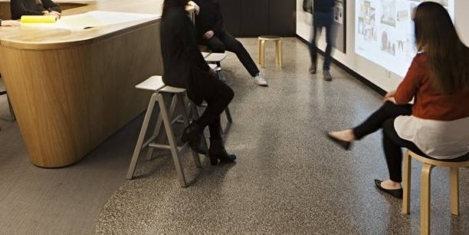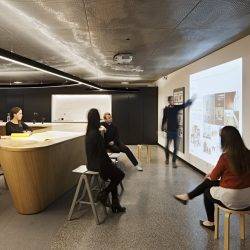November 3, 2017
Growing need for a flexible workplace creates fresh challenges for employers
Many businesses are misaligned with their people, with nearly half of employees not understanding their company’s strategic objectives, according to new research published by The Ludic Group, which claims that the changing nature of workforces and the growing need for a flexible workplace are creating fresh challenges for communication, collaboration and engagement. The research suggests that the impact of technology is causing digital chaos, with businesses struggling to get the communications balance right. With the number of channels and tools increasing almost half of people (44 percent) want to hear more from employers. Perhaps surprisingly, one in five (20 percent) individuals said that their firm has not used any tools or techniques to communicate with them. This lack of communication results in people being disconnected from the business strategy, with only half of individuals (50 percent) reported fully aligned with their company’s objectives and 44 percent not knowing or understanding what these are. Alongside this, people increasingly want to design their own working experience and expect more flexibility from their employers.






 The future workplace will replace familiar, rigid hierarchies and departments with small, collaborative networks of teams and the lines between individual organisations and ecosystems will blur as companies increasingly cast their net wider to innovate. This is one of the predictions made in a Fujitsu-commissioned whitepaper ‘
The future workplace will replace familiar, rigid hierarchies and departments with small, collaborative networks of teams and the lines between individual organisations and ecosystems will blur as companies increasingly cast their net wider to innovate. This is one of the predictions made in a Fujitsu-commissioned whitepaper ‘











 UK workers are largely optimistic about the impact automation will have in the workplace, with three in four believing it will give them more time to concentrate on their primary job duties and work more flexibly, claims new research. Workfront’s annual State of Enterprise Work report, which aims to capture not only how work is being done and what challenges office workers see in the present, but also how they see current workplace trends playing out in the near future reveals that 84 percent agreed with the sentiment that “the use of automation in the workplace will let us think of work in new and innovative ways.” 82 percent expressed excitement at the chance “to learn new things as the workforce moves toward more automation;” and while the overwhelming view on automation was positive, around 2 in 5 (38 percent) feared that rising automation will place humans and robots in competition for the same jobs in the future.
UK workers are largely optimistic about the impact automation will have in the workplace, with three in four believing it will give them more time to concentrate on their primary job duties and work more flexibly, claims new research. Workfront’s annual State of Enterprise Work report, which aims to capture not only how work is being done and what challenges office workers see in the present, but also how they see current workplace trends playing out in the near future reveals that 84 percent agreed with the sentiment that “the use of automation in the workplace will let us think of work in new and innovative ways.” 82 percent expressed excitement at the chance “to learn new things as the workforce moves toward more automation;” and while the overwhelming view on automation was positive, around 2 in 5 (38 percent) feared that rising automation will place humans and robots in competition for the same jobs in the future.









